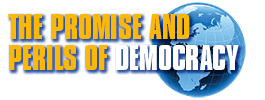The practice of change through art is about collaboration and community, and it starts with seeing. That was the main takeaway from “How Artists Lead the Way,” the latest panel in The Graduate Center, CUNY’s CHANGE series, held on October 21. Introduced by Bianca C. Williams, associate professor of anthropology at The Graduate Center, the panel examined the role of artists in imagining change, identifying new ways to resolve inequity, and effecting political action in new ways.
The moderator, Sarah Lewis, associate professor at Harvard University and founder of the Vision and Justice Project, started by framing the core question of “how to see.” The current fragility of rights in the U.S. accompanies a near violent lack of regard for each other, a particular way of seeing — or not seeing — the other, Lewis said. Arts and culture are central to establishing who belongs and who counts, she explained, and it is “only in times of crisis, like now,” that we are forced to look towards them.
Three artists introduced their practice of change: Vijay Gupta, violinist and founder of Street Symphony, and a MacArthur “genius award” winner; Hồng-An Trương, an artist using photography, sound, video, and performance, whose work has been shown at venues including the International Center for Photography, The Kitchen, and the Museum of Modern Art; and Hank Willis Thomas, a conceptual artist whose work has been exhibited at the International Center of Photography; Guggenheim Museum Bilbao, Spain; and Hong Kong Arts Centre; and who collaborates on the artist-run initiatives for civic engagement For Freedoms and the Wide Awakes.
“Who are my people?” Gupta asked rhetorically. For the artist, change is the key geography: the transitional position of communities in recovery and in re-entry. We are all recovering from something. Finding community for artistic connection and the basis for the deeply artistic ethos of collaboration, or “co-liberation,” is key, Gupta said. Especially during the pandemic, engaging in daily artistic practice, a daily “showing up,” is essential.
Much of Trương’s practice is about seeing. To her, political battles are ideological and visual battles. Seeing violence, she argued, is not enough to change it, as evidenced by the persistence of racial regimes and racialized violence since and despite the onset of photography and film. In her practice, she interrogates, intervenes, and engages with the tools and instruments of looking and seeing. After establishing new, radical ways of looking, she holds, our bodies must be out on the streets and will follow. Right now, Trương said, under this administration, there is a dual need to intervene in images and take the change to the streets.
To enable meaningful participation in the never-ending work of abolition and change, which has intensified during the pandemic, Willis Thomas and collaborators developed “The Infinite Playbook,” a game of change and engagement. The game sets the rules, or rather, incentives, for civic engagement, for a collective practice of the “we.” The artists prompt us to consider, or reconsider, who we are, to whom we are connected, what we do in life, and how to take action. “In the land of creativity, there is nothing we can’t achieve together,” Thomas said.
You will find a video of the event here and on The Graduate Center, CUNY’s YouTube channel
Presented with the Center for the Humanities and the James Gallery. Part of the Promise and Perils of Democracy project, funded by Carnegie Corporation of New York.
